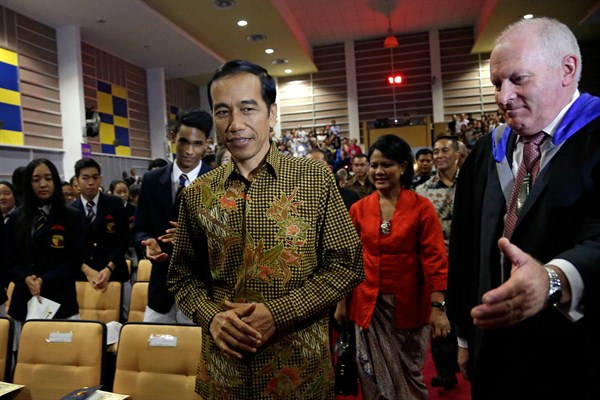Last week, Jakarta Gov. Joko Widodo was declared the winner of Indonesia’s presidential election after a hard-fought race with Prabowo Subianto, a former general. Widodo, popularly known as Jokowi, is a self-styled populist seen as representing a break with the country’s military-dominated past, but he has also indicated a desire to boost defense spending and build up Indonesia as a regional power. And although Subianto has alleged widespread electoral fraud and so far refused to concede, U.S. leaders have signaled their desire to work with Widodo.
In a statement congratulating Widodo on his election and praising Indonesian democracy, U.S. Secretary of State John Kerry mentioned recent progress in strengthening the “comprehensive partnership” between the two nations. President Barack Obama called Widodo the day after his election was formally announced to express a desire to “promote our shared objectives in Asia and around the world.” In his own congratulatory statement, Sen. John McCain said the United States “has a strong stake in the continued rise of a democratic, prosperous, and strong Indonesia, which is an indispensible foundation of our strategic partnership.”
This rhetoric is part of a longer-term process of strengthening U.S. ties with the Association of Southeast Asian Nations (ASEAN), of which Indonesia is a key member. Earlier this year, U.S. Secretary of Defense Chuck Hagel hosted the first meeting of ASEAN defense ministers in Hawaii. In remarks on Wednesday in San Francisco, Daniel Russel, the U.S. assistant secretary of state for East Asian and Pacific affairs, called Southeast Asia “in many respects, the dynamic center” of the Asia-Pacific region. The administration’s recognition of the region’s importance, he added, was driving a U.S. “rebalance within the rebalance” toward Southeast Asia.

